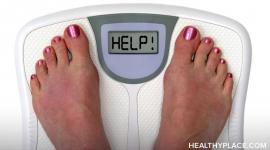Eating Disorders Therapy: Psychotherapy and Group Therapy

Eating disorder treatment can include a variety of components including therapy, often eating disorder psychotherapy, and group therapy. Treatment programs often emphasize both one-on-one eating disorder psychotherapy and group therapy for eating disorders as the two approaches serve different purposes and are often complementary (difficulties in treating eating disorders).
Types of Eating Disorders Therapy
Eating Disorder Psychotherapy, Family Therapy and Couples Therapy
Eating disorder therapy can be delivered in many formats and while always around eating disorders, the therapy may focus on the way eating disorders affect relationships and family as well as patient-specific issues. It is important to take into account the relationships and environment of the patient during therapy for eating disorders, so the work the patient does is not undone by those around her or him.
- Psychotherapy: the most in-depth eating disorder therapy, delivered one-on-one with a therapist. Eating disorder psychotherapy focuses on past life events (often traumas like abuse), personality issues, eating triggers and initial causes of the eating disorder. Eating disorder psychotherapy is crucial in cases where the patient has a history of trauma or where the eating disorder is particularly severe or longstanding.
- Family therapy: for dealing with the effects the eating disorder has had on a family. Family therapy for eating disorders may include the parents of the patient, the children of the patient or other family members. It aims to address the damage done by the eating disorder and put into place new, healthy ways of dealing with family stress and creating a healthy family environment.
- Couples therapy: focuses on a couple. In couples therapy for eating disorders, each person may meet with the therapist alone as well as together. This therapy aims to repair relationships and create new, healthy interactions.
While some of these therapies, particularly eating disorder psychotherapy, can take time, this may be required to get to the root cause of the eating disorder so the patient can fully recover from the eating disorder.
Eating Disorder Group Therapy and Cognitive Behavioral Therapy
Group therapy for eating disorders is a frequently used tool and can take a variety of forms and have a variety of purposes.
Some types of group therapy for eating disorders includes:
- Professionally-led: these groups tend to be part of a formal eating disorder program. In this type of eating disorder group therapy, an eating disorder professional, like a psychologist, will facilitate learning, conversation and sharing. Typically the goal is both therapy and support.
- Peer-led: these groups, like Overeaters Anonymous, tend to focus on support rather than therapy. This type of group therapy for eating disorders is best used once recovery has begun and not as an initial step to recovery as in some cases, these groups can worsen some symptoms of eating disorders like bingeing and purging.
- Cognitive behavioral therapy (CBT): this is an evidence-based eating disorder therapy focused around triggers, behaviors and consequences of the eating disorder. There is also focus on irrational and harmful beliefs, such as believing they are fat when they are severely underweight. Note this can be delivered as group therapy or in a one-on-one setting.
Eating disorder group therapy provides the advantage of interacting with others suffering from an eating disorder. This camaraderie shows the patient they are not alone and group therapy for eating disorders may provide additional insight as the patient sees their own lives mirrored in others.
APA Reference
Tracy, N.
(2022, January 4). Eating Disorders Therapy: Psychotherapy and Group Therapy, HealthyPlace. Retrieved
on 2026, January 1 from https://www.healthyplace.com/eating-disorders/eating-disorders-overview/eating-disorders-therapy-psychotherapy-and-group-therapy

